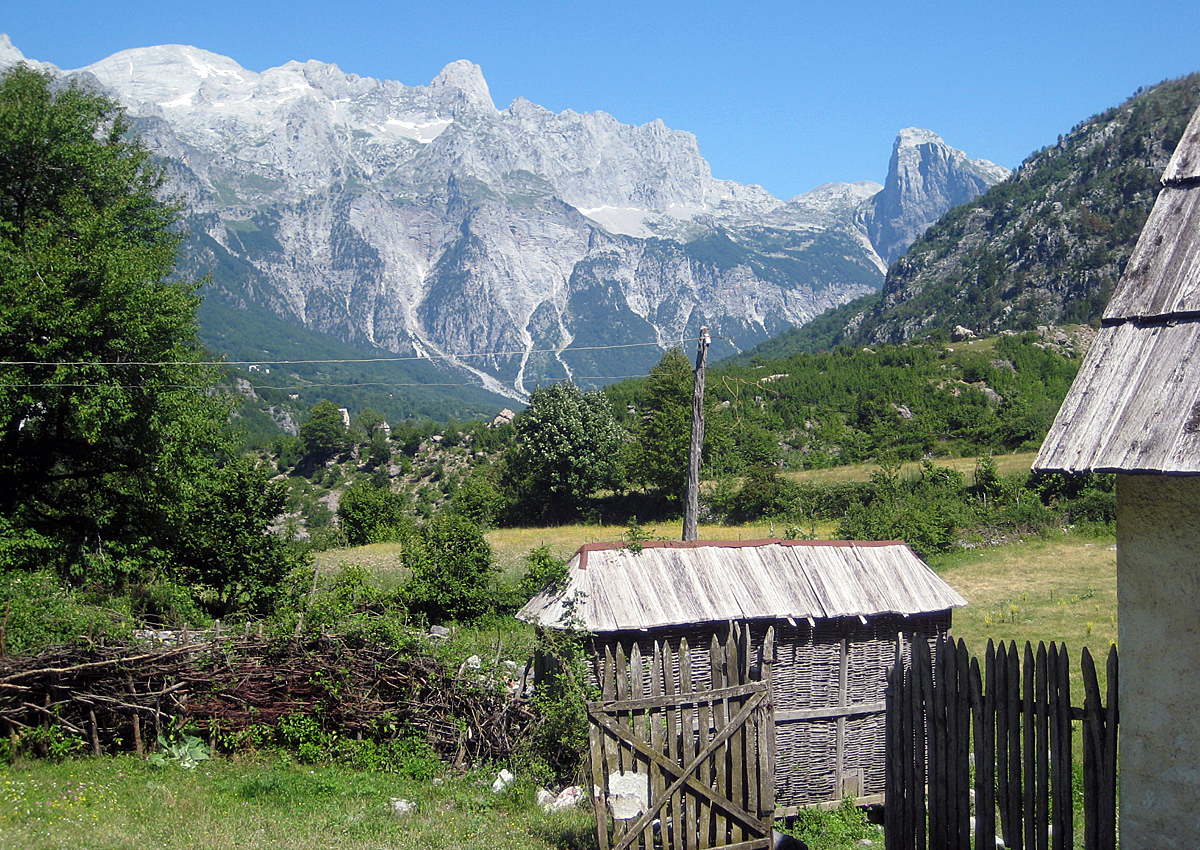This is not an original article of invest-in-albania.org.
You may read the original one by clicking here.
THIS forgotten Balkan country has some of Europe’s most specular mountains and as it hopes to join the EU, some of its cheapest prices too…
Not far to go, just another hour,” said Alix, our ebullient guide, as we bounced along the deeply rutted track. As the bone-shaking minibus crawled its way farther into the rugged mountains, I felt every bump and vowed never to complain about British potholes again.
When the occasional oncoming vehicle meant our driver steered perilously close to the track’s edge and the steep-sided valley below, I started wondering if I had been right to embark on an eight-day walking tour of the former Communist country of Albania.
While the main routes are surfaced – there is even a stretch of motorway in the south – many secondary roads, especially in the mountains, are nothing more than rocky tracks.
My fellow walkers, who included a biochemist, vicar, software engineer, supermarket manager, and accountant, and I cheered through sheer relief when Alix pointed towards flickering lights ahead and announced: “There’s Thethi!” This tiny village was our base for the next two nights. Surrounded by jagged peaks up to 9,000ft high, Thethi’s remoteness means only the most intrepid travellers make it to this scenic spot.
That evening we dined on gjelle, a traditional stew made of slow-cooked meat and vegetables, under a starlit sky. Even a temporary power cut, still common in Albania, did little to spoil our enjoyment as we donned head torches to finish our meal.
Tirana capital
Photo credits: Express.co.uk
This is the place where the only Western films allowed during the four decades of the communist dictatorship of Enver Hoxha were those of Norman Wisdom, who became a national idol. Miniskirts, religion and foreign travel were banned. Even bearded visitors had to reach for the razor before being allowed in the country.
It soon became clear what we had all been missing as we explored Thethi National Park, passing crystal clear streams and spectacular waterfalls en route to the 200ft deep Grunasi Canyon.
We returned to our village guesthouse via the lush Kaprea Valley but not before a bite to eat washed down with a fiery swig of homemade raki at a house.
After enjoying two days trekking in the mountains we left the high peaks behind and headed south, stopping off in the northern city of Shkodër, overlooked by the imposing hilltop Rozafa Castle.
Having been part of the Venetian Republic until the Ottoman conquest in the 15th century, Shkod«r still shows a heavy Italian influence. It seemed apposite to pick a pizzeria for our evening meal.
Photo credits: Express.co.uk
We strolled along Shkodër’s busy streets, lined with pavement cafes, ice-cream parlours and bars, to Vila Bekteshi, one of the city’s most popular restaurants.
Dining on the first-floor terrace, we enjoyed a two-course meal with homemade wine for just £4.
Albania has applied for EU membership but is not expected to join before next year. Whether it will eventually adopt the euro remains to be seen. Until then prices are, arguably, the cheapest in Europe.
Our journey continued south, swapping mountainous terrain for the city of Vlor«, Albania’s second largest port, and the gentler hills of Llogora National Park. We donned walking boots again and hiked to Dhjopuri Pass which, at nearly 2,000ft, afforded us fine views of the surrounding hills and, to the west, the Adriatic coast.
Although most days involved a walk there was time to soak up some of the country’s history and culture, something we did at the mountain village of Kruja, an hour from the capital Tirana.
The village clings to the hillside and is a mecca for souvenir hunters. From wooden shops fringeing a narrow cobbled street, everything from Albanian flags to rugs was on offer.
Our last morning was spent exploring Tirana. A cacophony of car horns echoed around Skanderbeg Square in the heart of the city. Named after a national hero, it acts as a focal point from where boulevards lined with trees, street cafes, stalls and boutiques head in every direction.
It is no Paris or Barcelona but it is a city eager to embrace what its European counterparts have enjoyed for years. Much of Tirana’s architecture is influenced by Italian architects who designed, among other landmarks, Skanderbeg Square.
Tirana is an intriguing city in a naturally beautiful country. From miles of white sandy beaches to rugged, unexplored mountains, I wonder how long it will be before this little country in the Balkans registers on everyone’s holiday radar? Get here quick.



Leave a Reply
You must be logged in to post a comment.